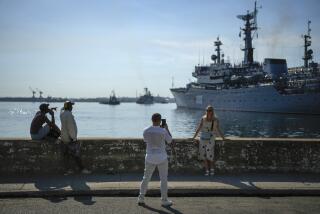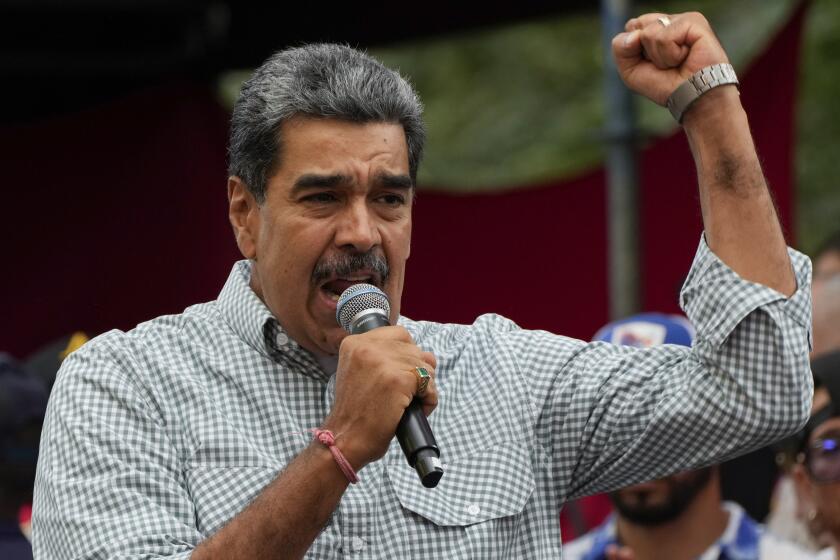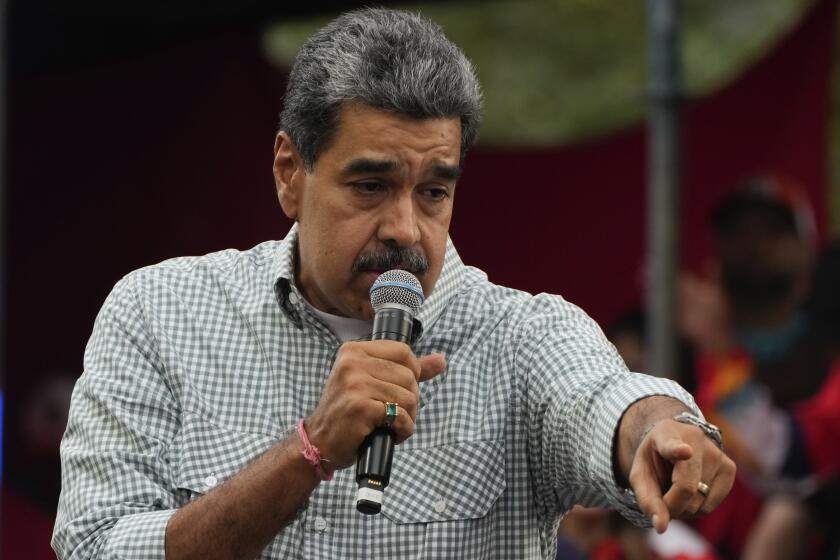The Cuban ties that bind, 50 years on
My trip to Cuba last summer was a lifetime in the making. My father emigrated from Havana to Miami in 1961 at age 6, and the family who came with him filled my childhood in Dallas with food, politics, jokes and, yes, dominoes. I longed to visit the source, to understand what all the fuss was about.
When the Obama administration loosened travel restrictions in April, my father, sister and I at last booked our tickets to Havana.
“Get ready to go back in time,” a friend told me.
Her words had seemed exaggerated and dark, but the past was unavoidable. I met relatives I’d never known, the many offspring of my grandmother’s cousin. Inside their modest living rooms, we drank coffee and talked about our older relatives, the bond that tied us. When my father’s family immigrated, they stayed behind and have inhabited the same crumbling homes for the past 50 years.
On a day-to-day basis, Havana, home to 2 1/2 million people, was chaotic. Sure, I wanted an authentic experience, but this meant getting lost in the heat and confusion, waiting in lines and being flattened on packed buses.
My relatives, on the other hand, handled life with resigned ease. They talked about getting by in an extralegal culture, where puny public wages are supplemented by black market activities. On their roof, an elaborate setup, hidden under potted plants, pulled in New York-based Univision, a clandestine addition to the government TV channels.
Our guidebooks glorified Havana’s night life, but a few days of navigating its run-down streets exhausted us. Added to that was the helplessness of reconnecting with family who were worlds apart, and who would remain that way, no matter their warmth and hospitality. I needed an escape from my escape, so we took a side trip to Viñales, a small town about 100 miles west of the capital in tobacco country where my great-grandmother had once lived. From the bus window, we saw concrete change to countryside, with farmland and an occasional mill or factory coming into view. The crowds were gone, and the air was cooler and cleaner in Viñales, perched in a valley and home to fewer than 30,000. Rivers snaked through fuzzy, dome-like hills, called mogotes, that surrounded it. North of town, a large system of caves lurked beneath the hills, a popular tourist attraction and onetime refuge for runaway slaves.
As the bus rolled onto the main street of town, a small mob of locals greeted us, offering rooms in their homes for a nightly fee. Cubans throughout the country rent rooms to tourists in what are called casas particulares. The homeowner earns extra money, and the casas are inexpensive, about $20 per night, compared with resort hotels, which can cost upward of $100.
My father had reserved a house over the phone from Dallas, and we walked less than a mile to it, passing tourists, Cubans and dogs skinnier than the ones I’d seen in Havana. Drivers moved down the street in everything from horse-drawn wheelbarrows to souped-up Chevy Bel Airs. We arrived at a charming blue house, with a front yard and fruit trees out back.
Inside, our hosts cooked us a lobster dinner and advised us on the area’s activities. Máxima, the matriarch, was pushing 97, and her age revealed itself through repeated introductions, but she smiled each time, as if welcoming family.
I peppered her with questions, all of which she answered matter-of-factly. Did she play dominoes? Not for a while. Had she ever been inside the caves? No. Driven a car? No! Had life changed a lot in the countryside after the revolution? Yes.
If I paused, she would jump in. I didn’t mind if I’d already heard it, because my Spanish was rusty and I enjoyed the slower pace. No doubt she’s forgotten me by now, but I relished the chance to sit and talk with someone who reminded me of my great-grandmother, who was chatty until her death at age 99.
After dinner, we wandered the streets again. Live music wafted from restaurants, where small bands played “ Buena Vista Social Club” songs.
Drawn to the sound of a louder performance, we stopped at a towering old church that offered live music every night in a side room. Outside in a small plaza, tourists and locals socialized and danced, avoiding the entrance fee.
It wasn’t difficult to find a ride the next day to the caves. As my dad approached a group of men on a bench to ask about one, I snapped some photos of the shiny American cars from the ‘50s.
It turned out that one of the men owned a flashy purple-and-red Bel Air, and soon enough we were on our way. He blasted reggaeton and salsa and explained that our fee for the day, $25, was more than he made in a month as a teacher.
Based on recommendations, we decided to tour the Santo Tomás cave, which was a favorite because of its large size. We joined a group of about 15 tourists, mostly Europeans, about half of them French. A guide translated for them, including the jokes, such as, “I need two girls without boyfriends to follow me into the dark hole,” or worse, “Watch your head” as we maneuvered around rocks and down rope courses.
The air was clammy, and our headlamps illuminated crabs in dark pools of water, giving everyone a fright. Roots from trees above ground wound long distances down into the caves to find dripping streams of water.
We passed a smaller group halfway through the tour, and their guide asked whether my sister and I were from Italy. I said we were from the U.S., which made him pause with surprise, before asking, “ California?”
Yes, I answered, also surprised, and he responded, “Must be, because everyone in California speaks Spanish.”
Afterward, we returned to town, looking for lunch. Cubans receive rations of beans, rice and, when available, vegetables. Hurricane season hit crops hard last year, so vegetables weren’t abundant. If you spend on an American scale -- about $5 per meal -- in restaurants, you’ll find plenty of meat, but not much more. My dad was craving a salad, and the waiter agreed to make him one of chopped cucumbers, because that was all they had.
That night we trekked a couple of miles uphill to Hotel La Ermita, a resort that catered to European tourists with cable TV and a swimming pool. A lush valley stretched out below; colorful buildings and small gardens dotted the landscape, all framed by the lumpy mogotes.
We wanted a nice dinner at the hotel restaurant, which had a menu with the first familiar dishes we’d seen during the trip, ropa vieja and fricase, both dishes of meat cooked in a tomato-based broth. Cuban food, as I’ve always known it, is easier to find today in Miami than in the homeland. But the food was cold and so was the waiter, who didn’t seem particularly happy about serving tourists.
We gazed across the valley during dinner as the sun set and realized that the tableside view was off-limits to Cubans. We talked about how things had changed and how some of our older relatives had returned to Cuba after many years and had been saddened by these changes.
I was awash in nostalgia. Cuba’s old cars and buildings suggest a time warp, but the country isn’t frozen in amber. My dad brought baseballs, assuming that the national sport, and his strongest memory, would still be prevalent, but we didn’t spot any games to which we could contribute them. A couple of kids swinging a worn bat in a narrow Havana street raised our hopes one night, but our cousin told us they could be fined for playing there. It was one of many complaints she made about the police.
What hadn’t changed was the laid-back, warm, humorous personality Cubans are known for. I told some Cubans about Americans’ interest in the island and that fewer restrictions would bring considerable tourism. Although I worried that more tourism would help the government, not the people, they were optimistic.
“Well, look,” a man in line at a bank explained to me, “you help the government, you help the country, you help the people.”
The people. My people. The trip was a lifetime in the making, and now I had a lifetime of memories. I don’t know what the future will hold for them except for some inevitable change, but I do know I will return and see them again in a few years.
More to Read
Sign up for Essential California
The most important California stories and recommendations in your inbox every morning.
You may occasionally receive promotional content from the Los Angeles Times.










